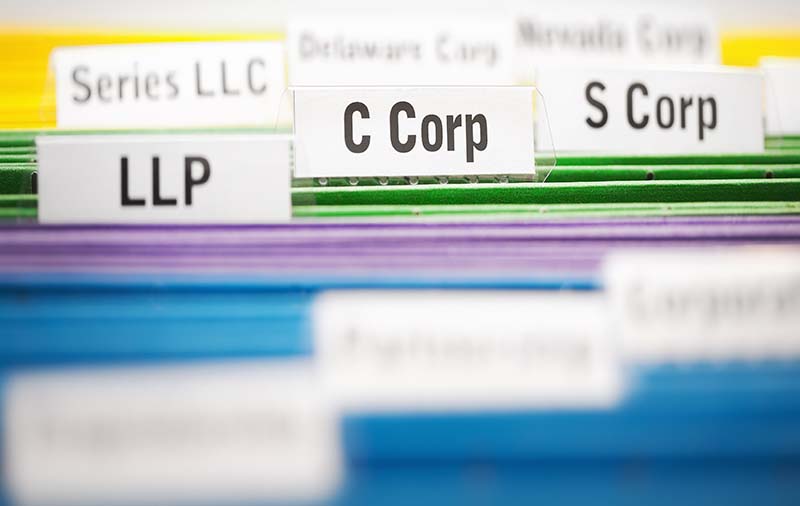A Lesson In S-Corporation Basis Taught By The Courts With a Big Ol’ Southern Grin
What about loans from shareholders. In theory, and I use that term literally, a shareholder makes a loan to a corporation. They are supposed to repay that loan with interest. However, in the real world, these loans are never paid back.
Jun. 06, 2018

The way that I was taught basis in an S-Corporation, was if a shareholder started a business with $10,000, those funds would be added to their Paid in Capital (PIC) Account, and that would be the shareholder’s beginning basis. The monies made or loss in a year would either increase or decrease the basis in the S-Corporation. As we should already be doing is keeping track of every shareholder’s basis. If there is a loss in the S-Corporation in excess of basis, then the loss is suspended, until such a time as the basis increases to a point where the loss can be taken. There was a Tax Court and Appeals Court case recently that dispelled a myth I had, and perhaps the reader may have had.
Let’s say that you own an S-Corporation, and take out a loan for $300,000 in the S-Corporation’s name, but you as the sole-shareholder have to personally guarantee that loan. I was under the presumption that these recourse loans were added to the basis of an S-Corporation shareholder. After all, if the S-Corporation goes out of business, the shareholder is on the hook for the balance of the loan. Logically, this loan should increase the shareholder’s basis. If you are in tax, you realize really quick, that just because something follows logic, it isn’t necessarily legal. `
In the US Tax Court Case, Rupert and Sandra Phillips v. Commissioner, and the Appeals Case Rupert and Sandra Phillips 121 AFTR 2d 2018-XXXX (CA 11), the taxpayer owned 50% of an S corporation that developed and sold residential and commercial real estate. The business relied heavily on debt financing, and virtually all of the loans were guaranteed by the taxpayer. When the corporation defaulted on the loans, the lenders sued the taxpayer on her guarantee, which resulted in liens against her property. To take advantage of S corporation losses, the taxpayer increased her stock basis by her prorata share of the unpaid judgment amounts. The taxpayer argued that a basis increase was justified because the judgment against her demonstrated an actual economic outlay. The Tax Court disagreed, concluding that the lenders initially didn’t look to her as a source of repayment. Upon appeal, the Eleventh Circuit affirmed the Tax Court’s decision, holding that a basis increase would have been appropriate only if the taxpayer had made payments on the guaranties or judgment.
So, from this case, we can discern that had payments on the notes been made, then the amounts would appropriately be added to the shareholder’s basis. One question would arise here. If the properties are sold, and the liens on the property were satisfied, then would this increase the shareholder’s basis?
What about loans from shareholders. In theory, and I use that term literally, a shareholder makes a loan to a corporation. They are supposed to repay that loan with interest. However, in the real world, these loans are never paid back. Would these loans be added to the shareholder’s basis. In the last few years, I have added these “loans” to the corporation’s PIC account so they at least increase the basis. Remember, that the shareholder can take money out of their PIC account, as a return of capital. A return of capital isn’t taxable to the shareholder. It’s a given when all of the money is taken out of PIC, and distributions are in excess of basis, then the shareholder has a capital gain to deal with.
What makes no sense about this case is in a partnership, which is a flow-thru entity just like an S-Corporation, a recourse loan is added to both the inside and outside basis. Why would that be different for an S-Corporation. Not to mention that in this case we are dealing with a real estate investment company, which by all accounts should be an LLC as a disregarded entity, thus making it a partnership for tax purposes.
S-Corporations are not as tax advantageous as they used to be. I know that I am one of the few tax professionals that think that. In this case, it’s just simple math. Not that I don’t have clients that are still Sub-S’s, but the whole shareholder basis issue is one big reason to convert.
—————-
Craig W. Smalley, MST, EA, is the Founder and CEO of CWSEAPA, PLLC. He has been admitted to practice before the Internal Revenue Service as an Enrolled Agent and has a Master’s Certificate in Taxation from UCLA. In practice since 1994, Craig is well-versed in U.S Tax Law and U.S. Tax Court cases, and specializes in individual, partnership, and corporate taxation for high-net-worth clients; entity structuring and restructuring; and representation before the IRS regarding negotiations, audits and appeals. Craig is currently a columnist for CPA Practice Advisor and AccountingWEB and has had 12 books published. His articles have been featured in publications including the Wall Street Journal, The New York Times, and Christian Science Monitor, and he has been interviewed and appeared as a featured guest on numerous radio shows and podcasts. Craig can be reached at craig@craigwsmalleyea.com.
